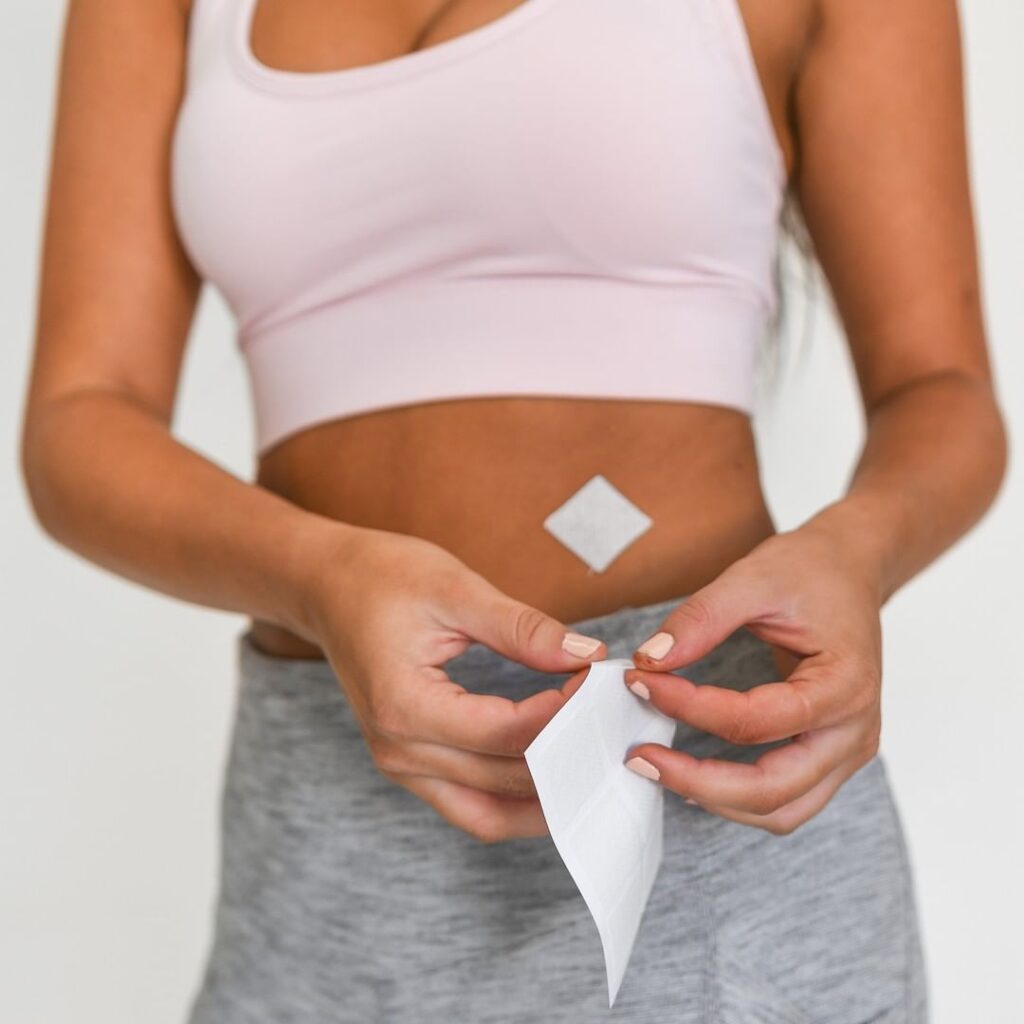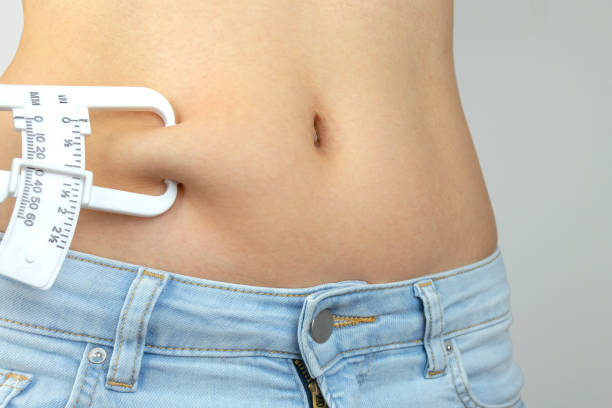Weight loss patches are a relatively new type of weight loss solution that promise to assist users in losing weight in a way that is both healthy and efficient. In spite of the fact that they have seen an increase in popularity in recent years, there is still a great deal of debate around them.
There are many different kinds of weight loss patches, but they all work according to the same basic principle: you take a few small patches that contain the ingredients your body needs to utilize fat, and you use these to keep losing weight even after you have stopped eating those calories and working off those calories through workout.
Table of Contents
What are weight loss patches

The market for weight loss products has recently seen a surge in the popularity of weight loss patches. They are thin strips that you stick on your body and then continue to wear for a set amount of time, typically between 14 and 28 days. The patch has chemicals that, when combined, have the potential to speed up your metabolism and make it easier to burn belly fat.
There is a wide variety of weight reduction patches available on the market today; nevertheless, the vast majority of these patches include chemicals like caffeine, extract of green tea, or raspberry ketones. The generation of thermogenesis, which is what enables fat to be burnt off rather than stored as fat, is supposed to be stimulated by these, and it is believed that this is the case.
However, some people use them for other objectives, such as treating acne, even though they are most commonly used when exercising or for the purpose of weight loss in general. In point of fact, there are users who believe that their patch makes them more attractive since it causes them to lose weight more rapidly than they normally would.
How do weight loss patches work

Weight loss patches contain a variety of substances, many of which the manufacturers believe can aid people in their efforts to shed excess pounds. There are a variety of potential components found in weight loss patches, including the following:
- Extract made from green coffee beans
- Hokuto mint, commonly known as Japanese mint
- Acai berry
- Green tea
- Ephedra
- Bitter orange
- Flaxseed oil
There are weight loss patches available that include multiple substances that work together to promote weight loss.
It is believed that the patches work by delivering their active chemicals to the surface of the skin via a delivery system that is incorporated within the patch. The particles of the active substance must then be absorbed by the skin in order for them to be able to enter the bloodstream of the individual.
The evidence that weight loss patches are helpful in causing weight loss is lacking. This is due to the fact that dietary supplements are not required to fulfill the same standards for effectiveness that over-the-counter or prescription drugs do.
In addition, any studies that were carried out by the product producers were often of a low sample size and did not adhere to the norms that are typically expected of scientific research.
There is a possibility that using any of these weight loss patches would result in adverse effects that are so severe that they will outweigh any potential benefit the patches may provide in terms of weight loss.
To put it another way, the potential benefits do not outweigh the potential drawbacks.
Benefits of weight loss patches

Patches for weight loss typically contain active substances that work to speed up the metabolism. Green coffee beans contain chlorogenic acids, which have been shown to improve fat metabolism, reduce cholesterol levels, and lower triglyceride levels. As a result of the undefined absorption, these effects are very slight, unpredictable, and inconsistent. Weight loss patches are not subject to regulation by the FDA.
Different kinds of weight loss patches
Patches for weight loss are adhesive patches placed to the skin. Once administered, they are intended to gradually release their active ingredients into the body.

Not enough research has been conducted to determine the efficacy of the chemicals that are expected to be absorbed into the skin via these patches. Even with oral administration, research is insufficient, but transdermal administration is even less understood.
The following are frequent substances in weight loss patches:
Acai berry
Acai is a fruit that grows on a palm tree in the Amazon. In recent years, interest in utilizing it as a nutritional supplement has increased due to its many purported health benefits. To draw any conclusions about the efficacy of the fruit, additional research is required. But because acai is a fruit, it does have some nutritional benefit.
Acai contains several antioxidants. Antioxidant-rich foods lessen oxidative stress within the body.
Obesity and type 2 diabetes are known to increase oxidative stress, thus it is possible that ingesting antioxidants could play a modest role in aiding in the management of these disorders. However, the extent of acai berry’s effect is unclear.
Green coffee bean extract
Green coffee extracts are unroasted coffee beans, which, according to advertisements, prevent fat buildup and increase energy.
In spite of this, there is less evidence that green coffee beans or green coffee extract have a substantial impact on weight loss.
Although a very small 2021 study found that adults with obesity who took the supplement for 12 weeks experienced a reduction in body fat, the study included just 60 participants and did not involve a patch.
This current research is intriguing, but further investigation is required to determine the effects and safety of green coffee beans.
Garcinia cambogia
Garcinia cambogia, derived from a tree that grows in Asia, Africa, and the Polynesian Islands, is a common ingredient in weight loss patches. The fruit’s hydroxycitric acid is designed to reduce the number of fat cells in the body while decreasing hunger.
SlimKick Weight Loss Patch
The SlimKick patch is formulated with Fucus vesiculosus. Sometimes, manufacturers include this seaweed extract in weight loss products. Fucus vesiculosus includes iodine, which may be linked to diabetes, however there is no evidence that it causes weight reduction in people. It may be safe for topical application to the skin.
Zinc pyruvate is another popular SlimKick patch component for weight loss. Manufacturers of dietary supplements assert that zinc pyruvate improves fat decomposition and decreases body weight. Although this substance is safe at oral doses of 30 grams per day for up to six weeks, scientists are unable to establish its efficacy in patches.
Himitsu Patch
The patch of Himitsu contains Japanese mint. According to the inventors of this patch, Japanese mint aids in the breakdown of fat cells, boosts the metabolism, and prevents the absorption of sugar and carbs. However, there are no studies on the advantages and hazards of Japanese mint for weight loss.
Zycie Nutrition Weight Loss Patch
This patch contains numerous substances, such as Fucus vesiculosus and zinc pyruvate, that some claim can aid in weight loss. However, as previously indicated, these chemicals may not be as effective as advertised.
The patch also contains bitter orange extract, which may reduce a person’s appetite, increase calorie expenditure, and facilitate fat breakdown. However, there is a lack of evidence to support these statements.
FAQs
Does the weight loss patch work?
The weight loss patch is effective. The weight loss patch is a secure and efficient method of weight loss. It is an easy technique to lose weight without incurring the hefty costs connected with alternative therapies. The substances in the weight reduction patch help you feel fuller and eat less, allowing you to reach your target weight more rapidly.
Does the Japanese weight loss patch work?
The Japanese weight loss patch is effective!
This product can assist with weight loss. It contains the chemical resveratrol, which has been demonstrated to aid in weight loss and increase fat burning. Additionally, this product contains green tea extract and caffeine.
What are the side effects of weight loss patches?
These patches are connected with a multitude of adverse effects, including nausea and vomiting. Nausea and vomiting are normally not life-threatening symptoms, but they can be unpleasant. These symptoms may persist for up to two weeks after you discontinue use of the patch; thus, if you are concerned about them, consult your physician.
Do patches actually work?
Yes, Patches is a technique for alleviating the symptoms of a skin ailment. It is useful for treating skin itching, irritation, redness, and scaling. Typically, patches are put to the diseased area and left in place until the body’s natural oils absorb them.
Conclusion
Researchers have not yet researched the safety and effectiveness of weight loss patches.
Although some of the components may have weight loss effects when taken orally, further research is required to determine whether they are effective in a patch.
Diet and exercise should be the core of your weight-loss plan if you seek a practical method to losing weight in a sustainable manner. Even if weight reduction patches have positive effects, they cannot substitute a good diet and regular physical activity. Start by altering your daily diet, reducing your caloric intake, and gradually increasing your physical activity.
The most common error when attempting to reduce weight rapidly is establishing an unattainable objective. The rate at which you lose weight relies on your body type and how quickly your body adapts to a particular program. Taking so-called short cuts will only result in weight loss that is not sustainable.

